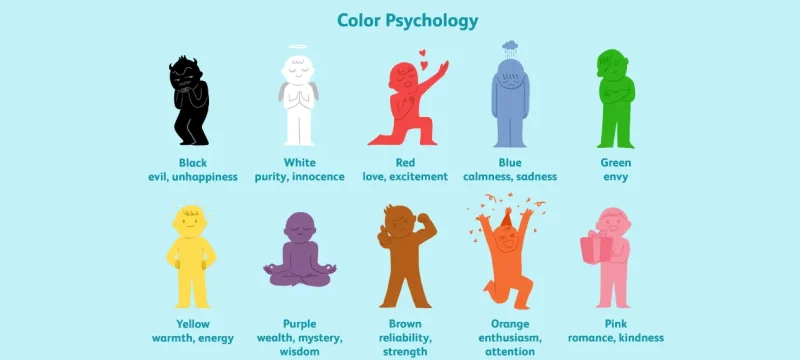Color is not merely a visual experience; it’s a silent language that communicates with our emotions and influences our behavior. In this exploration of the impact of color on mood and behavior, we delve into the intricate realm where art meets science, unraveling the psychological palette that colors our daily lives.
The Canvas of Emotion: How Colors Speak to Our Psyche
From the vibrant red of a sunset to the calming blue of a serene ocean, colors evoke a spectrum of emotions. Psychologists have long studied the phenomenon of color psychology, recognizing that different hues can trigger distinct emotional responses. Understanding this language allows us to navigate a world painted in shades that influence our perceptions and actions.
Red: The Hue of Passion and Energy
Considered the most emotionally intense color, red has the power to evoke strong feelings. Psychologically, it is associated with passion, energy, and excitement. From the red of a romantic rose to the stop sign commanding attention, this hue stimulates the senses and can even increase heart rates—a physiological response to its energetic nature.
Blue: A Tranquil Oasis for the Mind
In contrast, blue embodies calmness and serenity. Often linked to the vastness of the sky and the soothing tones of water, blue has a tranquilizing effect on the mind. Psychologically, it is known to reduce stress and promote a sense of peace. In environments where focus and concentration are paramount, blue emerges as a strategic choice.
Yellow: The Sunlight of Positivity
Radiating warmth and positivity, yellow is a color that sparks joy and optimism. Psychologically, it stimulates mental activity and is associated with happiness. From the cheerful glow of a sunflower to the inviting hue of a welcoming front door, yellow has the power to uplift spirits and foster a positive atmosphere.
Green: Nature’s Harmony in Color Form
Green, abundant in nature, represents growth, harmony, and balance. Psychologically, it is linked to feelings of stability and calm. Whether in the lush foliage of a forest or the crisp greenery of a well-tended garden, this color connects us to the natural world, promoting a sense of renewal and equilibrium.
The Nuances of Neutrals: Gray, Brown, and Beige
Neutral colors like gray, brown, and beige provide a backdrop of sophistication and timelessness. Psychologically, they convey stability and reliability. From the professionalism of a gray business suit to the earthy tones of a cozy living space, neutrals offer a versatile canvas for various moods and settings.
Applying Color Psychology in Everyday Life
Understanding the psychological impact of color allows individuals to intentionally incorporate hues into their surroundings. Whether choosing the color scheme for a room, designing a logo, or creating marketing materials, the thoughtful use of color can influence emotions, perceptions, and behaviors.
Painting a Life in Full Spectrum
As we navigate the vivid tapestry of our daily experiences, the impact of color on mood and behavior becomes increasingly evident. By recognizing the psychological nuances of different hues, we gain the power to curate environments that align with our emotions and aspirations. In this intersection of art and science, the palette of color becomes a dynamic tool for enhancing well-being and shaping the canvas of our lives.









